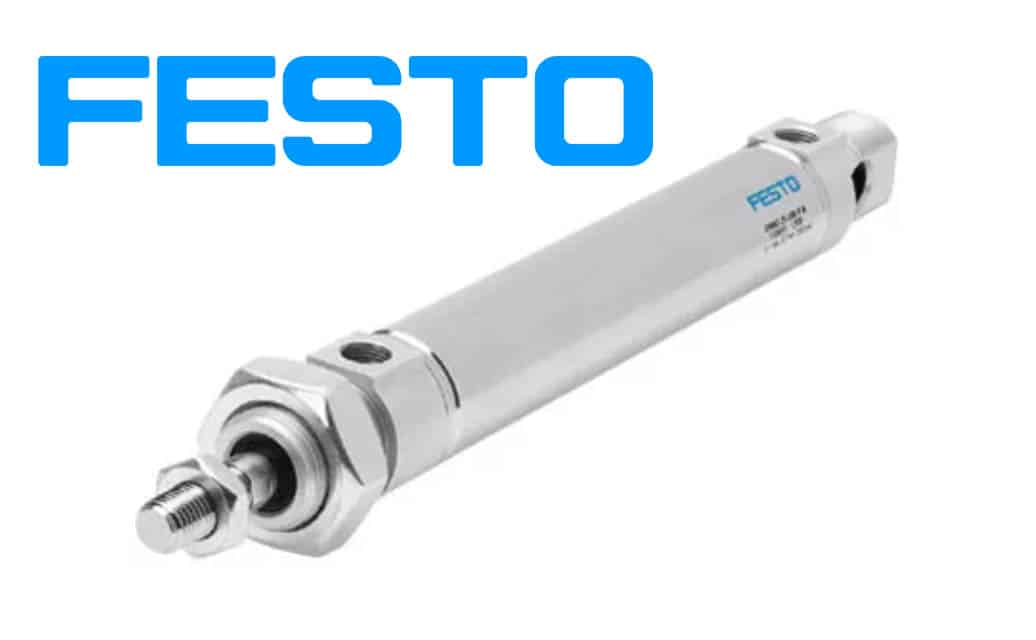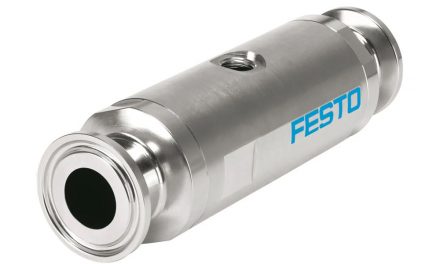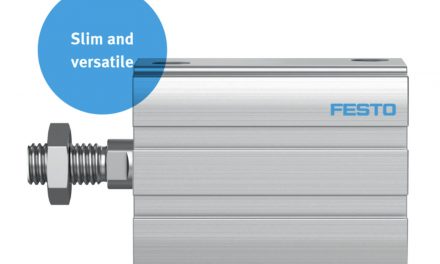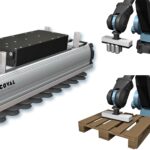Written by: FESTO
The issue
During a vertical down-stroke, the cylinder load and force are combined to produce a “lunge” movement. This is especially an issue when the load is significant compared to the force of the actuator.
The solutions
Fortunately, there are methods for handling this situation. Below are three examples:
3/2 valve method
Use the force of the load to push the cylinder down. This completely removes the issue with the inrushing of compressed air. Issues with this method; the actuator does not exert any force in the down position. Note, we added a metering-in flow control valve located in the bearing cap to provide control of the movement in the up direction. Also, ensure that there is a silencer in the “open” port to ensure that no dirt gets into the cylinder.

Metering in and out
The cause of our undesired motion is the inrushing air that “slaps” the top of the piston, producing a large amount of force from the actuator that is combined with the mass hanging down. The backpressure has to build up to resist this combination of forces. The need for a build of backpressure is the reason for our “lunge” motion. To prevent this, we use a metering-in flow control that prevents the air from rushing into the top of the cylinder. This reduces the amount of force the actuator exerts during the initial downward motion. The pressure will then slowly build up to clamp down on the load when the cylinder is fully extended. Note that this will have to be taken into account during the sequencing of the machine if the force that the cylinder is exerting is critical.

Metering in and out with piloted Check Valves
Now let us take the above circuit and add piloted check valves to add a level of safety if air pressure is lost. The piloted check valves do not directly address our issue with the lunging, but in the application that we have described is it a good practice to add them to ensure the cylinder does not move in case of a pressure drop in the system.

So far we have talked about the worst-case scenario, the cylinder facing down. With the cylinder facing up the issue still persists, but to a lesser effect. The fact that the larger surface area of the piston is on the bottom of the cylinder provides, there is a larger amount of force resisting the initial “slap” of the inrushing air. Again, this will be based on the application and how significant is the load compared to the forces that the cylinder can exert.
Brought to you by FESTO, a partner of DIRECTPNEUMATICS.COM












